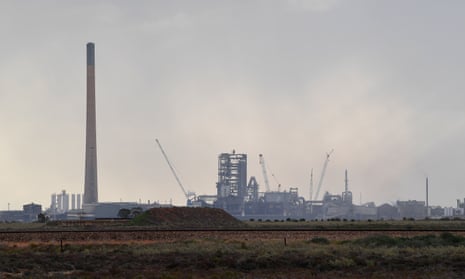Lead in the blood of children living in the South Australian town of Port Pirie has reached the highest level in a decade, with a sharp uptick in concentrations recorded during 2020.
The town of 15,000 people is home to one of the world’s largest primary lead refineries, which has been in continuous operation since 1889 and serves as the town’s main employer.
South Australia’s Department for Health and Wellbeing (DHW) has been tracking blood-lead levels among children aged between two and five years old since 1984 but began using new methods in 2011.
Its latest report for 2020 found a sharp increase in the level of exposure among children of all ages, despite best efforts of residents to protect their homes.
In 2020, 276 children reported a blood-lead result higher than 5 micrograms per decilitre, amounting to 74.8% of those tested. The number of children with results equal to or exceeding 20 micrograms per decilitre grew from 13 children in 2019 to 16 children in 2020.
Among two-year-olds, the average blood-lead level recorded in 2020 was 7.3 micrograms per decilitre – an important reading that is considered a measure of contamination among the wider population.
Dr David Simon, the director of scientific services at DHW, said that though Port Pirie residents had done “an excellent job” in protecting their homes, the spike was expected, given the average concentration of lead in the air had been growing.
“The increased lead-in-air contributed to the amount of lead-contaminated dust deposited in homes and public spaces across Port Pirie during the year, meaning more people were likely exposed,” Simon said.
“As a result, the improvements we saw in the first half of 2020 were not sustained and continued to plateau for the rest of the year.
“Young children absorb lead very quickly and spend much of their awake time in areas that can be easily contaminated, such as floors and soil, and ongoing efforts to reduce lead exposure within the community remains the highest priority.”
Belgian metals giant Nyrstar operates the refinery, but has failed to address the issue of lead contamination despite promising to do so.
The state’s Environment Protection Authority reported at the end of last year that the refinery had breached the conditions of its operations licence after recording concentrations of lead-in-air levels of 0.41.
The National Health and Medical Research Council (NHMRC) considers any reading above 5 micrograms per decilitre of blood as above the average “background” exposure among the general population, with unborn babies, infants and children the most vulnerable.
The health effects of readings between 5 and 10 micrograms per decilitre are not clear, with the NHMRC finding an association between levels in this range with lower academic achievement, more behavioural problems and increased blood pressure among adults, and a delay in puberty among boys and girls.
Beyond 10 micrograms per decilitre, the effect of lead contamination becomes more pronounced as it begins to affect organ and body functions.
The World Health Organization says there is no safe level of lead exposure.
The Nyrstar refinery in Port Pirie has been subject to a series of controversies over the last two years relating to industrial contamination of the surrounding area and safe work practices.
Earlier this month the Australian Workers’ Union raised the alarm about four “near-miss” incidents at the plant over the last two years.
Two of those incidents involved molten lead explosions that temporarily closed the refinery.
In separate incidents, the EPA investigated the company over two chemical leaks into the surrounding area, a sulphuric acid leak in January 2019 and another “toxic” cadmium leak in 2017.
